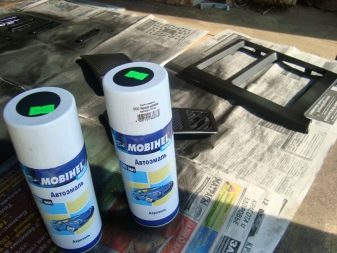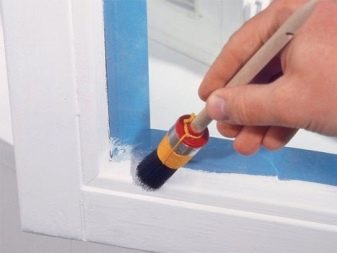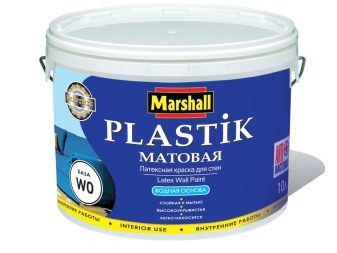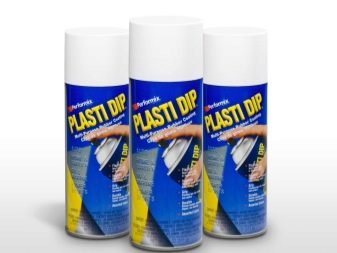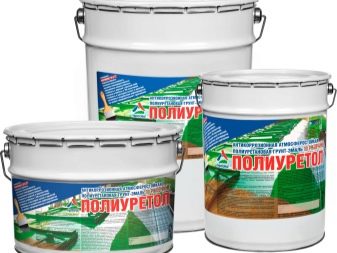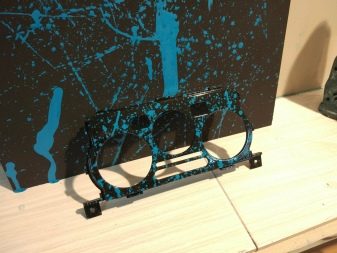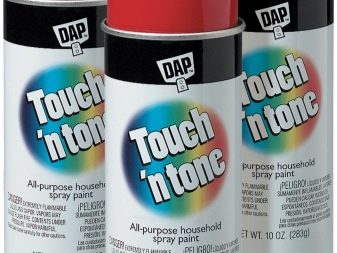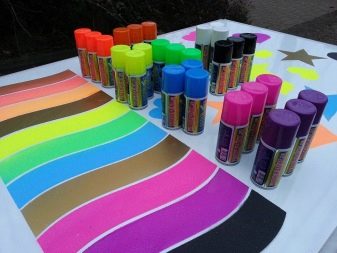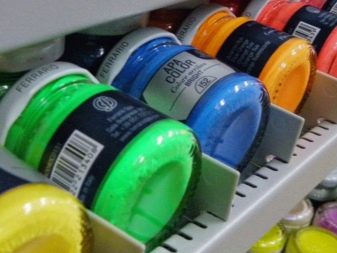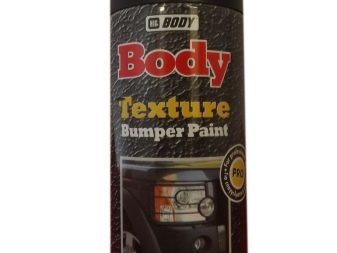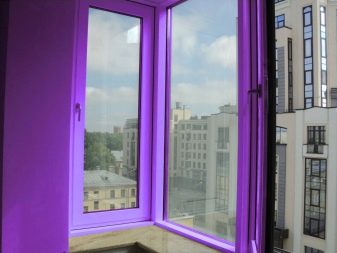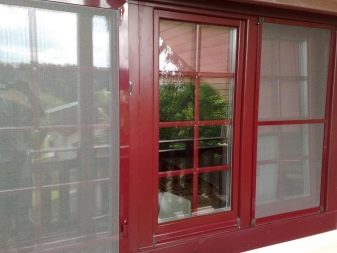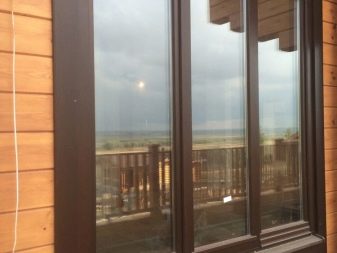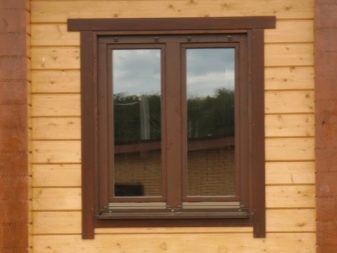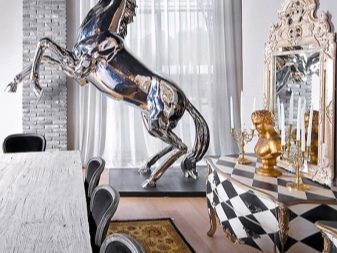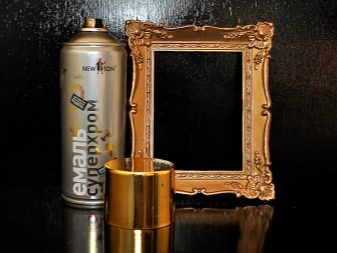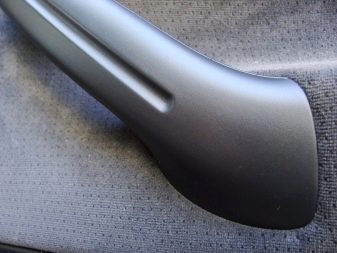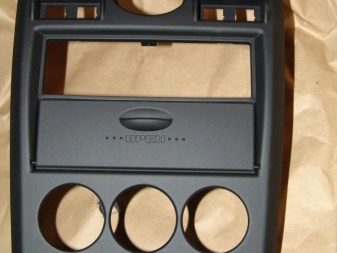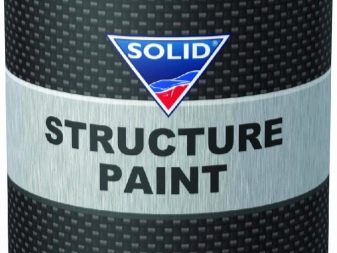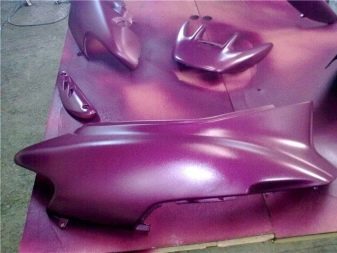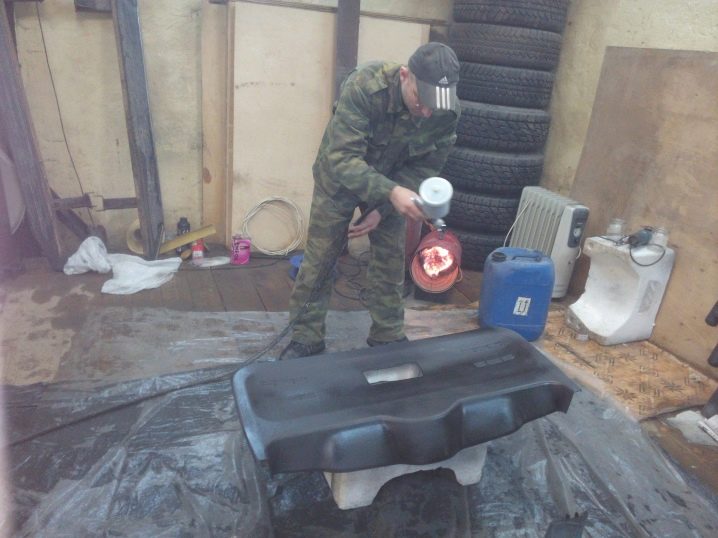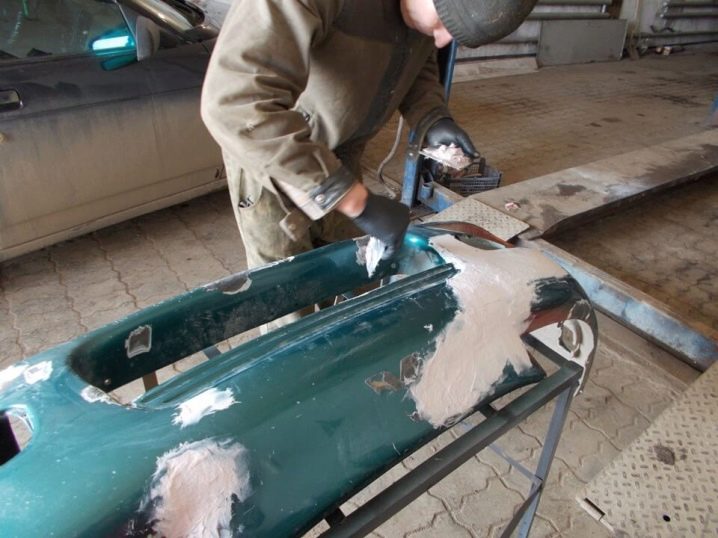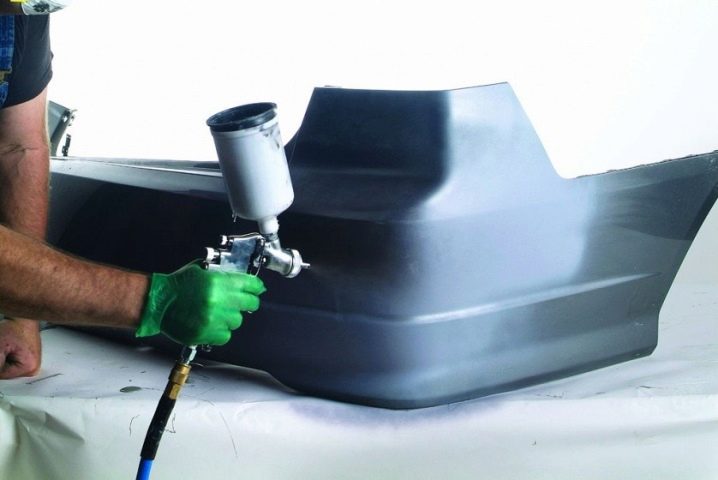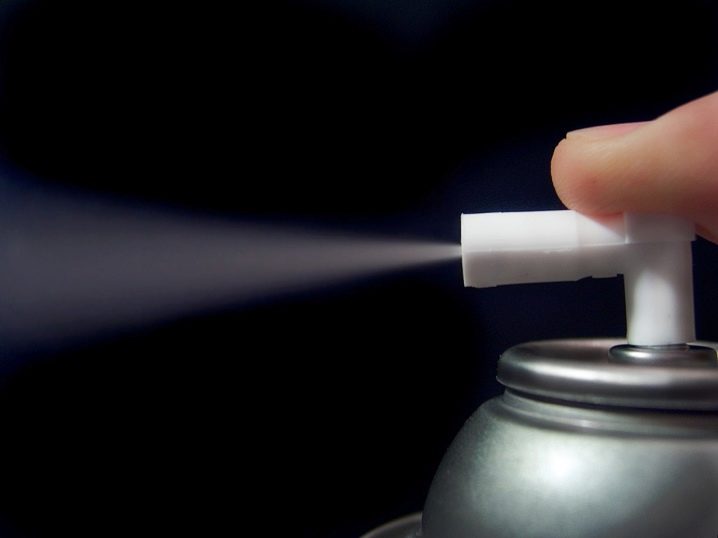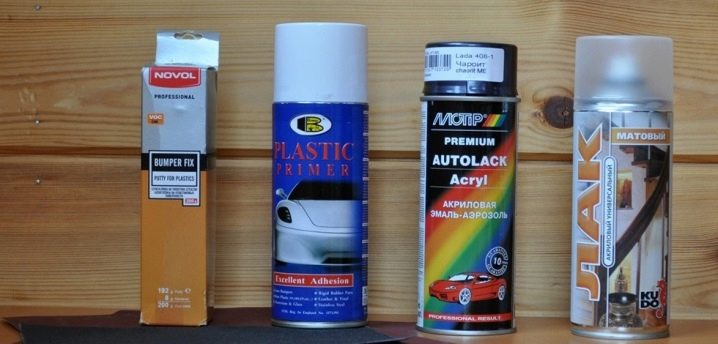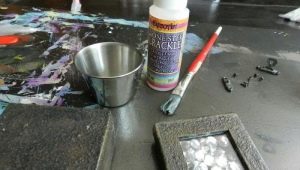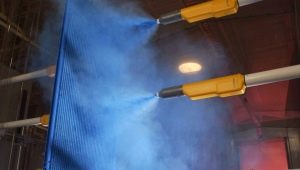Plastic paints: types and uses

Plastic items have many virtues. They are light, relatively durable, tolerate heat and contact with water quite well. However, the appearance of such products does not always satisfy people. After prolonged use, the plastic loses its attractiveness, scratched. And sometimes the color of the selected item is not pleasant from the very beginning.
The solution in many cases is a high-quality paint for plastic, but when choosing it is necessary to take into account its specific features.
Special features
Plastic paint is different from formulations that are applied to other materials. Its application also has its own specifics. For example, plastic on the basis of ABS and PVC before painting should be covered with a special primer, which should be bought in a car shop or paint shop.The mixture is sprayed and rubbed, the treated surface dries for at least 60 seconds.
Basic requirements for dyeing:
- thorough drying and cleaning of the surface, its release from lubricating oils, dust particles and so on;
- preliminary preparation is necessary in all cases, with the exception of applying acrylic water-based paint on polystyrene or ABS;
- the temperature of the plastic, the dye and the equipment with which it is applied must be carefully balanced;
- it is desirable to heat the air to 18 degrees and above, it should be dried to 80% or less;
- it is necessary to apply only one layer, the thickness of which averages 60 microns;
- when drying plastic products are kept at a temperature of from 18 to 60 degrees, depending on how thick the layer is applied.
A very thin paint layer is not very strong and weakly retained on the surface. If you apply more than 120 microns of paint, it will slowly dry, and decorative qualities will deteriorate sharply. The polymerization process usually takes 5-7 days. However, with insufficient temperature, solid humidity and increased layer thickness, it may take several weeks.
Scope of application
Virtually any plastic product can be painted with special coloring mixtures. Window sills and PVC windows are covered with the same compositions, fiberglass and other plastics with completely different ones. Polyvinyl chloride is often treated with polyurethane-acrylic water-based paint. It does not give a matte effect and well manifests itself even in large areas.
The same paints will be useful if you need to process:
- siding;
- sandwich panel;
- hard PVC;
- construction profiles;
- doors and window frames.
Kinds
Acrylic enamel on water (polyurethane-acrylic paint) in most cases has two basic components. In addition to the dye itself, it includes a hardener, due to which the mixture becomes resistant to mechanical and chemical destructive factors. Good curing mixtures themselves are colorless and have no odor.
In addition, they give the paintwork material and other valuable properties:
- hiding power;
- decent adhesion;
- resistance to ultraviolet rays.
Polyurethane paint differs in high durability. It is formed by polyurethane components with the addition of acrylates.This paintwork material solves two important tasks - it replaces both the primer and the coloring composition. However, it is possible to do without priming only if the surface is not too dirty.
Polyurethane paint is a wear-resistant substance that allows it to cover even significant areas of plastic products. The waterproof film increases the hardness of plastic objects, without at all reducing their resilience and elasticity. The surfaces do not stick to each other after drying and for a long time retain their original appeal.
Regularly used items (radiotelephone, spectacle case, toys, hand lights, instrument handles) cover matte dye soft-dot. With it, a pleasant tactile effect is achieved. Another important advantage is the intensive absorption of sound and light. In most cases, the soft-do make black, but chemists have learned to produce a brighter, more saturated colors.
Vinyl paint on plastic differs in the increased environmental friendliness, costs relatively cheap. One unpleasant circumstance interferes with its universal use - low resistance to destructive influences.A short contact with water or wind is enough for the plastic construction to revert to an unattractive appearance.
Products made of foamed rubber must have three qualities: resistance to UV light, moisture, and minor mechanical damage. These “opponents” are the most dangerous for any insulation, as well as other insulating structures. Spray processing allows the paint to better stay on the surface, no matter which concentrate was chosen.
No widely used paint to impart antistatic properties to objects is capable of. As a result, they are provided by applying additional products after plastics are stained.
Design and colors
It would be too difficult to consider all the existing options for plastic products and conclude which color and design is better for them to choose. Therefore, you should pay attention to the doors and windows based on PVC, which are often found in residential buildings.
When choosing a painting option, it is advisable to focus on the overall style of the structure. If it is necessary to decorate a house in the Russian style, it is worth maintaining a balance between the colors of the windows, doors and the tonality of the roof. Natural shades are appropriate here.Dark brown paint can be used. It perfectly masks drips from the rain and street dirt.
Light colors (beige, yellow, bluish, orange) are recommended to be used only in combination with similar roof colors.
Houses of minimalist style are not well combined with various decorative delights, the best thing here is to use subtle tonalities. If there is a desire to create a high-quality and attractive coating, you should use the color “under chrome”.
Modern manufacturers have learned how to create beautiful sparkling and iridescent versions of dyes. Gold paint It looks elegant and elegant, sometimes even somewhat pompous. Mirror paint gives a very attractive effect on chrome plating. The film formed by such a composition is relatively thin, but at the same time as strong and resistant to external influences. For obvious reasons, anti-corrosion properties are not very important here, but protection against negative atmospheric phenomena is very much appreciated.
Matte paint soft-dot is designed primarily for those items that are constantly in contact with human hands. It is pleasant to touch them, the feeling of velvety and warmth is created.The color can be any - black, silver, bronze and so on.
Black paint with a glossy effect, according to most car owners, is great for trim cars.
Relief (structural) paint is recommended to cover:
- moldings;
- exterior mirror boxes;
- bumpers;
- parts of salons.
It effectively copes with any visual defects, including wear and cracks. The dye is able to reconstruct the original appearance of plastic, give it a characteristic roughness and hide minor damage.
It is possible to apply a layer of paint and varnish, even without having special skills and experience of such work. Quick drying allows you to appreciate all the attractiveness of the texture surface in minutes. The use of an additional layer of varnish is not required.
Unlike cars, where nothing should distract the driver from the road and instrument readings, in home conditions any (silver or even bright) tone can be used. It is only necessary to observe a balance between different shades of the situation, to adhere to the chosen color temperature (cold or warm).
It is necessary to focus on personal taste, and on how well a particular solution fits into a particular interior. For example, the color "under the silver" is not always appropriate. Evaluating the environment in which the plastic product will be used, it is possible to exclude errors when choosing the tonality and texture.
Tips for choosing
Soft-point is ideal for trimming vehicles, because it is resistant to wear, easy to apply even on vertical surfaces, helps smooth out sharp corners. The composition of the category of soft-dot can be painted not only plastic. However, in this case, careful selection of a primer is required, which is appropriate for the particular substrate.
It is unacceptable to use as a primer solutions with vitriol, because when in contact with acrylic paints this component repeatedly weakens their positive qualities and interferes with adhesion.
Aerosol cans can be used no matter how great your skill in painting is. This coloring method is very convenient. At the same time the choice of colors is huge.
Aerosol dyes can also be presented in the format of soft-toch.The advantages of their use are reliable overlap of small deformations and the ability to form a truly original decor. On the other hand, no one forbids you to use monadny enamel to create a bright gloss.
Additional benefits of aerosols are:
- possibility of combination with other painting tools;
- ease of use;
- possibility of imitation of any kinds of surfaces;
- long period of preservation of brightness of color.
- Also, the remaining unspent paint can be stored for a long time inside the container. The application of the dye on a large area in this way is more economical than using other options. In addition, it is difficult to find a better way to overlap the previous layer.
- Spray with aerosol when working must be kept at a distance of 25 - 30 cm from the surface. It is important to constantly move your hand, not stopping anywhere. Otherwise there may be not too elegant drips that will spoil the appearance of the surface. It is worth considering that the painting by spraying occurs in two layers, so the paint consumption may be higher than estimated.When choosing a dye, it is necessary to take into account that aerosols are not suitable for mixing colors and creating a clear line of colored and unpainted space.
- As paint for plastics is not allowed to use mixtures based on acetone. They are inexpensive, but the risk of damaging the product is too great.
- It is important to remember that polystyrene, polyethylene, polycarbonate and polypropylene are not painted with any formulations. You should not even try to find paint for them.
- Liquid plastic looks like paint. It is considered universal, but before using it, it is necessary to thoroughly study the composition, chemical properties and find out whether the mixture is suitable for a specific purpose.
- If you don’t have your own knowledge and skills to carry out quality work, or an attempt to paint the plastic didn’t lead to anything, you should contact the specialists for advice, and not continue independent experiments.
How to paint a plastic part in the next video.
